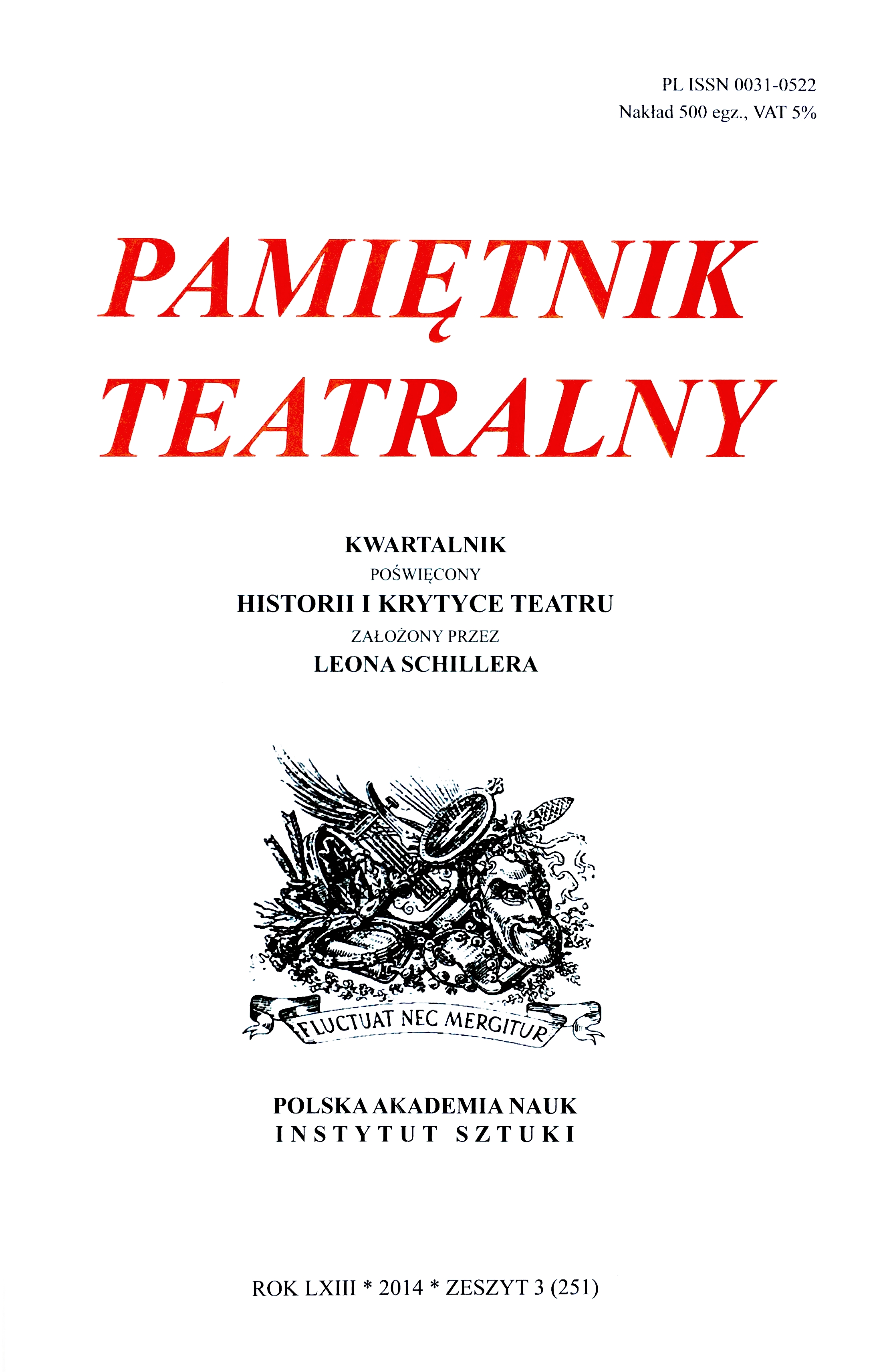Reinhardt reżyseruje Shakespeare'a
Reinhardt Directs Shakespeare
Space as a Paradigm of Production
Author(s): Małgorzata LeykoSubject(s): Theatre, Dance, Performing Arts
Published by: Instytut Sztuki Polskiej Akademii Nauk
Keywords: Shakespeare;Max Reinhardt;
Summary/Abstract: Plays by Shakespeare constituted an important and strong element of the repertories of Max Reinhardt’s theatres, perhaps the strongest apart from the Greek tragedies, German and European classics, and contemporary drama. Novelty of Reinhardt’s Shakespearean productions becomes apparent when juxtaposed with the German tradition of staging Shakespeare, i.e. with productions by Ludwig Schröder, Ludwig Tieck, Franz Dingelstedt, or Georg von Meiningen. In Reinhardt’s case, the reform in stage technique went hand in hand with a new definition of goals for theatre: it stopped being subservient to literature and came to be viewed as using literature only as a basis for its own works. The key innovation of this programme was to stage classical plays using modern aesthetics: ‘Thanks to the classics, new life flows onto the stage; its colours and music, its greatness and grandeur, its joy’, the German director proclaimed.Max Reinhardt staged fifteen plays by the English playwright, some of which he produced only once (e.g. The Tempest or Julius Caesar), twice or thrice (Macbeth, The Comedy of Errors, King Henry IV, Love’s Labour’s Lost, Much Ado about Nothing) whereas some he revisited numerous times, producing them on different stages that offered varied space conditions – these include As You Like It, The Merchant of Venice, and A Midsummer Night’s Dream especially. The 1913–14 Season at the Deutsches Theater saw the beginning of A Shakespearean Cycle [Shakespeare-Zyklus] that showed thirteen premiere and re-run productions in total. The article focuses on select productions of A Midsummer Night’s Dream: at the Neues Theater in Berlin on a box stage in 1905; at the Künstlertheater in Munich on a frieze stage in 1909; in the Nicolasee park in Murnau in 1910; at Klessheim in 1932, and at the Hollywood Bowl amphitheatre for the audience of 20,000 people in 1935. They show how, depending on what space conditions he had, Reinhardt changed his strategies of directing.
Journal: Pamiętnik Teatralny
- Issue Year: 251/2014
- Issue No: 3
- Page Range: 66-85
- Page Count: 20
- Language: Polish

